|
 Early Galaxy Went Through Teenage Growth Spurt
Early Galaxy Went Through Teenage Growth SpurtDurham, UK (SPX) Mar 22, 2010 Scientists have found a massive galaxy in the early Universe creating stars like our sun up to 100 times faster than the modern-day Milky Way. The team of international researchers, led by Durham University, described the finding as like seeing "a teenager going through a growth spurt". Due to the amount of time it takes light to reach Earth the scientists observed the galaxy as it would have appeared 10 billion years ago - just three billion years after the Big Bang. They found four d ... read more |
. |
|
|
Free Space, Earth, Energy And Military Newsletters - Delivered Daily |
| . | . |
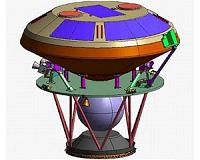 Life Without Water And The Habitable Zone | .. |
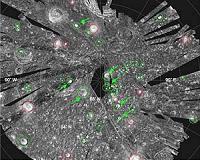 The Mystery Of Moonwater | .. |
 A Galactic Desktop Of Cold Dust | .. |
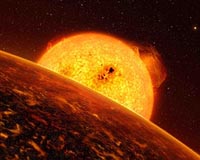 Newly Discovered Planet Could Hold Water | .. |
 Cassini Shows Saturnian Roller Derby |
| .. |
Astronomers Observe Fast Growing Primitive Black Holes Copenhagen, Denmark (SPX) Mar 18, 2010
Copenhagen, Denmark (SPX) Mar 18, 2010Quasars are active and very powerful black holes at the centre of distant galaxies. The black holes are extremely massive weighing between 100 million and 10 billion solar masses and rotating around the super massive black hole is a disc of gas and dust. The inner ring of the disc moves faster than the outer rings. The movement causes the material in the rings to rub against each other, he ... more Ten Craters On Mercury Receive New Names  Washington DC (SPX) Mar 18, 2010
Washington DC (SPX) Mar 18, 2010The International Astronomical Union (IAU) recently approved a proposal from the MESSENGER Science Team to confer names on 10 impact craters on Mercury. The newly named craters were imaged during the mission's three flybys of Mercury in January and October 2008 and September 2009. The IAU has been the arbiter of planetary and satellite nomenclature since its inception in 1919. In keeping w ... more 'Cool Jupiter' widens search for exoplanets  Paris (AFP) March 17, 2010
Paris (AFP) March 17, 2010Marking a further step in the hunt for worlds orbiting other stars, astronomers on Wednesday said they had found a cool planet the size of Jupiter that encircles a sun at searing proximity. The work is a technical exploit in the field of exoplanets, as planets outside our Solar System are called, they said. "This is the first (exoplanet) whose properties we can study in depth," said Clai ... more |
.. |
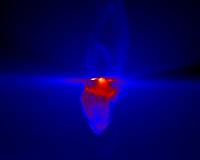 Simulations Solve A 20-Year-Old Riddle 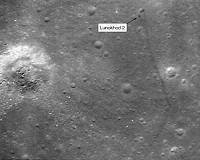 Solving A 37-Year Old Space Mystery  Instant online solar energy quotes Solar Energy Solutions from ABC Solar |
.. |
|
|
Free Space, Earth, Energy And Military Newsletters - Delivered Daily |
|
|
. |
 See Spot On Jupiter. See Spot Glow
See Spot On Jupiter. See Spot GlowPasadena CA (JPL) Mar 17, 2010 New thermal images from powerful ground-based telescopes show swirls of warmer air and cooler regions never seen before within Jupiter's Great Red Spot, enabling scientists to make the first detailed interior weather map of the giant storm system. The observations reveal that the reddest color of the Great Red Spot corresponds to a warm core within the otherwise cold storm system, and images show dark lanes at the edge of the storm where gases are descending into the deeper regions of the planet. ... read more |
| The contents herein, unless otherwise known to be public domain, are Copyright 1995-2010 - SpaceDaily. AFP and UPI Wire Stories are copyright Agence France-Presse and United Press International. ESA Portal Reports are copyright European Space Agency. All NASA sourced material is public domain. Additional copyrights may apply in whole or part to other bona fide parties. Advertising does not imply endorsement, agreement or approval of any opinions, statements or information provided by SpaceDaily on any web page published or hosted by SpaceDaily. Privacy statement |
| Previous Issues | Mar 20 | Mar 19 | Mar 18 | Mar 17 | Mar 16 |